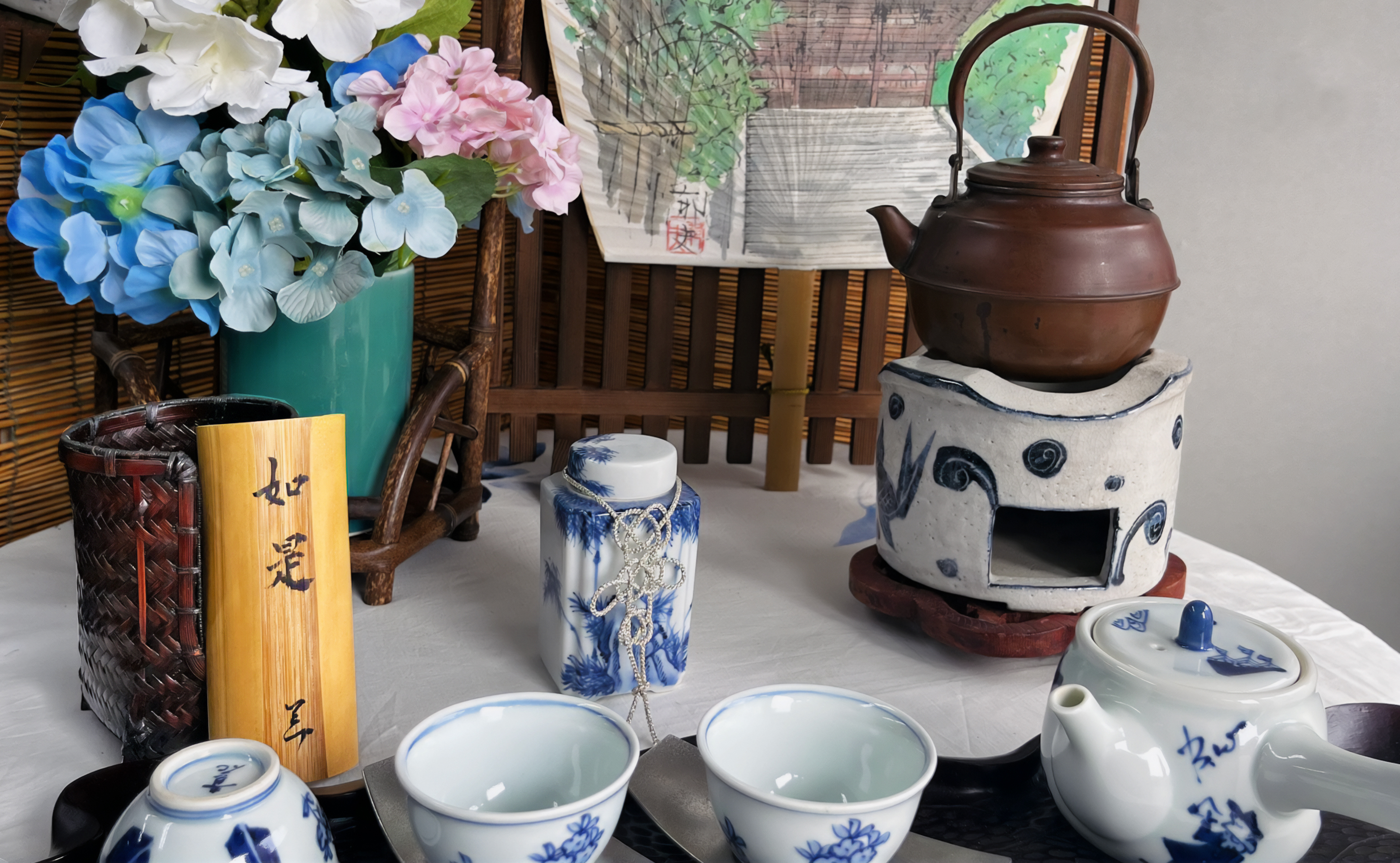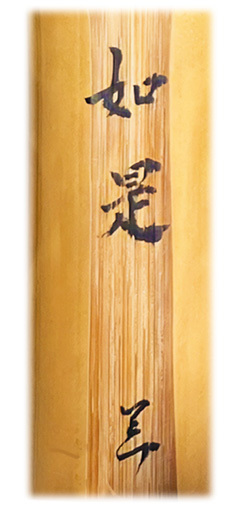A Small World for Early Summer
Posted by Yoshi Kai on 21st May 2025

In our office, we keep a quiet tradition we call “small world.” It’s a hand-arranged, ever-changing corner that reflects the spirit of each season. Through it, we create a space rich in meaning that brings nature, memory, and tradition into daily life.
This month’s small world celebrates the quiet arrival of early summer. The display was created by Yoko-san¹, who continues to guide these seasonal expressions with quiet grace and remarkable intuition.
A rustic iron kettle resting on a hand-painted brazier is at the heart of the arrangement. A porcelain tea set offers a peaceful invitation, while hydrangeas in soft, early-summer hues, though artificial, evoke the gentleness of the season. Behind, a watercolor of a garden gate draws the eye inward, offering a quiet path into stillness.
The calligraphy on the bamboo chago² adds a final contemplative touch. It reads 如是³ (meaning “as it is”) as a reminder to meet each moment with acceptance and clarity.
More than just decoration, our small world reflects an awareness of seasonal feeling and is rooted in two timeless traditions:
- Nijūshi Sekki (二十四節季) – the 24 seasonal divisions of the Japanese traditional almanac
- Kisetsukan (季節感) – Japanese tradition of sensing and honoring the season
These small worlds are fleeting, humble, and often quiet—but within their stillness lies a kind of presence that gently connects us to time, nature, and one another.
To close, here is a seasonal haiku in honor of this early summer moment:

kettle whispers low
the garden gate holds the breeze
as it is, it stays
鉄瓶の
風を抱く門
そのままに
(Tetsubin no / kaze o daku mon / sono mama ni)
¹ Yoko-san is a Japanese tea ceremony master and a practitioner of Kyūdō (Japanese archery). She visits our office twice a week and brings a deep sense of seasonal harmony and mindfulness to each display.
Read more about: Japanese Kyudo: Zen in the Art of Archery
² A chago (茶合) is a traditional Japanese tea utensil used to measure and transfer loose tea leaves. Often made of bamboo, it combines practicality with aesthetic appeal and is commonly used in Japanese tea ceremonies.
³ The phrase 如是, pronounced nyoze, is deeply rooted in Buddhist thought and East Asian philosophy. It translates roughly as "thus it is" or "as it is," and often appears as the opening word of Buddhist sutras. The concept expresses an appreciation for the true nature of things, acknowledging reality without distortion or the desire to change it. Water is meant to be wet, fire to give heat, and wind to blow. Things are—and indeed need to be—what they are.

